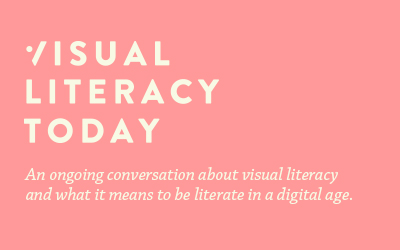This article describes the process and outcomes of working with an undergraduate writing course as they created original scholarship for a digital map edition. Traditionally, library interventions in writing courses are limited to introducing students to library resources, developing better search terms, and research strategies. More recently librarians have incorporated primary source materials from special collections and archives into some classes as a way to engage student research. We worked with a faculty writing partner to introduce students to an archive but framed the experience through the lens of spatial thinking.
Visual Literacy Workbook for Graphic Design and Fine Art Students by David Moyer and Brian Flynn
Visual Literacy for Libraries: A Practical, Standards-Based Guide by Nicole Brown, Kaila Bussert, Denise Hattwig, and Ann Medaille
(Re)thinking Orientalism: Using Graphic Narratives to Teach Critical Visual Literacy by Rachel Bailey Jones
Looking and Learning: Visual Literacy Across the Disciplines by Deandra Little and Peter Felten
Visual Literacy for Theatre by Ming Chen
Visual Literacy by James Elkins
The Power of the Gaze: An Introduction to Visual Literacy by Janne Seppänen
Visual Literacy: Writing about Art by Amy Tucker
Visual “Literacy”: Image, Mind, and Reality by Paul Messaris
Visual Literacy: A Conceptual Approach to Graphic Problem Solving by Judith Wilde and Richard Wilde
Visual Literacy Connections to Thinking, Reading, and Writing by Richard Sinatra
Visual Literacy in Communication: Designing for Development by Anne Zimmer and Fred Zimmer
A Primer of Visual Literacy by Donis A. Dondis
The nature of today’s communication is overwhelmingly visual. Images, as modes of communication, play a dominant role in our daily activities and are especially prominent in the lives of young people. Today’s students were born in image-saturated environments, the era of internet, digital technologies and touchscreens. Their communication practices are mediated visually, including photo and video creation and sharing, video chatting, and the visual language of emoticons, GIFs, and emojis. However, the moment students enter university classrooms, they are thrown into almost a completely textual world. Such highly textual context may cause an alienation from the course material and content. In consequence, contemporary millennial and post-millennial generations, although usually technologically savvy, are often visually illiterate.
In this study, we explore the competence of preservice teachers (n = 161) in labelling and creating new cross-sectional human diagrams, based on anatomy knowledge depicted in longitudinal sections. Using educational standards to assess visual literacy and ad hoc open questions, results indicate limited skills for both tasks. However, their competence is particularly poor creating diagrams, where shortcomings were observed not only in visual literacy but in content knowledge. We discuss the misconceptions detected during these assessments.
Digital technology has changed the way in which students utilize visual materials in academic work and has increased the importance of visual literacy skills. This paper reports the findings of a research project examining undergraduate and graduate students’ visual literacy skills and use of images in the context of academic work. The study explored types of visual resources used, the role that images play in academic papers and presentations, and the ways students select, evaluate, and process images. The findings of the study indicate that students lack skills in selecting, evaluating, and using images. Students use a range of visual resources in their presentations but rarely use images in papers.
This interpretive case study examines how undergraduate students enact visual literacies, focusing on transmediation from visual-embedded research papers into multimodal brochures, in an entry-level college writing course at a large research university in the U.S. Data sources included students’ artifacts, interview transcripts, and field notes.
Students in non-arts disciplines generally are not taught to read and interpret visual images in the same way that those in the arts are taught. As a result, students in non-arts disciplines are often uncertain how to incorporate visual primary sources into their research. Using several of the frames outlined in the ACRL Framework for Information Literacy for Higher Education as an overarching structure, as well as the pedagogical model outlined in TeachArchives.org that focuses on active learning techniques, the authors outline their instructional techniques for teaching students to work with, and even interrogate, visual resources in a non-arts-based classroom.
Interest in the role of visual literacy within education has grown significantly over the last 50 years. Many scholars maintain that living in an image-rich culture in the twenty-first century requires preparing visually literate graduates who are capable of a critical reading and understanding of visual texts, as well as constructing images through critical thinking. However, nowadays, discussion about visual learning and development of visual literacy competencies of students studying business and management remains quite limited. This paper presents a case study of a visual learning activity introduced to 1st year undergraduate students which are often referred to as ‘digital natives’. This activity aims to develop students’ visual critical thinking about a complex social phenomenon of corruption through their engagement with a non-digital activity such as freehand drawing.
